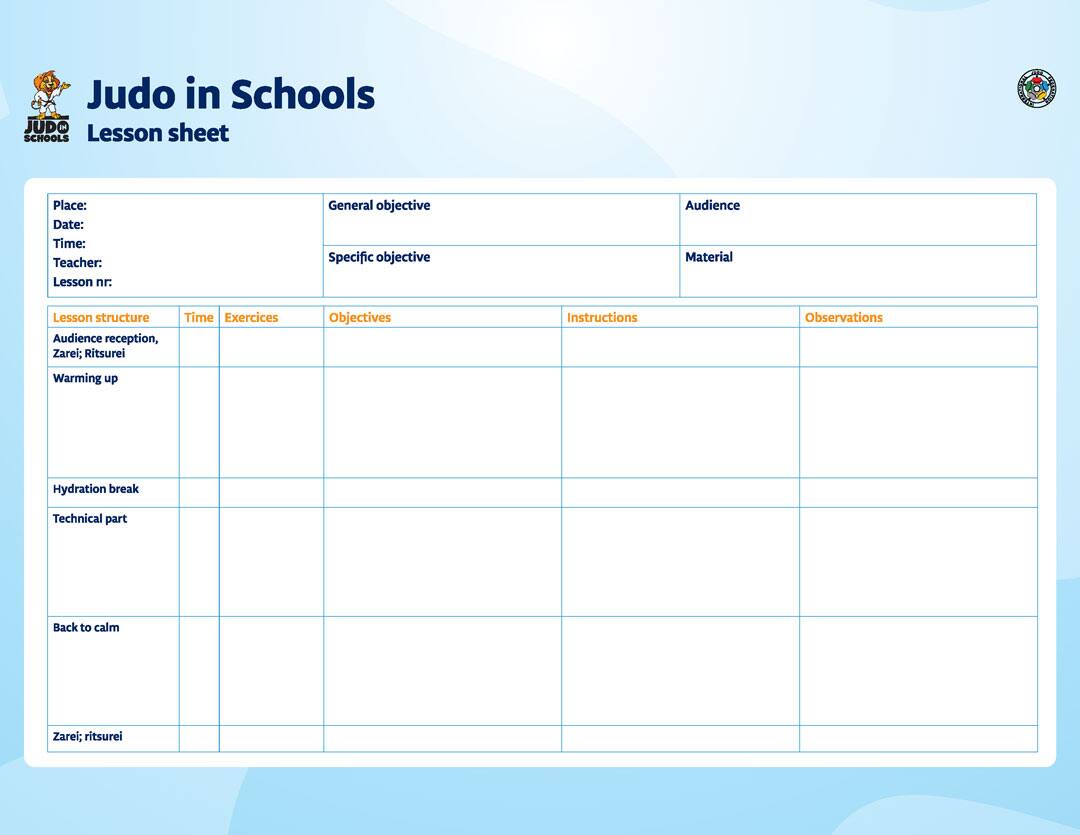How to use the Lesson Sheet
The lesson sheet created by the IJF is a great tool to keep both you and your students on track for each instructional lesson. The objective of using these sheets is to give each student a structured way of learning the games and techniques you plan on going through during each lesson. You are encouraged to use this sheet for each lesson as a printout or projection if you have the capability of doing that. Below you will find a quick summary of the main points of the lesson sheet.
Goal
It is important to know what your main goal is during each lesson. Each technique and game should focus around a single subject or different objectives you plan on achieving.
Material
What are you using during this lesson to help the students learn? Obviously, the tatami and gis will be on each lesson but be sure to incorporate balls or ropes as you create fun games for the students.
Lesson Structure
There are a few items within this column that are quite important to follow. The audience reception and warmup are meant to ease the students into each lesson by greeting each other and starting with a simple game, exercise, or stretch to get their blood flowing. The technical aspect is the main program of the lesson and what will be taught. This can include more games or instruction on techniques. Finally, the return to calm is a great way of bringing the students together and coming to the end of the session. The IJF focuses this part of the lesson on physiological, phycological, and physical elements to help the students relax and evaluate what they learned throughout the teachings. Please be sure to incorporate the hydration break as this gives students a much-needed chance to socialize and congratulate each other on their good work.
The horizontal elements at the top of the sheet are meant for the instructor and how they can improve. The instructions are meant to keep you focused on what needs to be done while the observations will allow yourself to improve on the lesson and help commend the students on what they did well.
